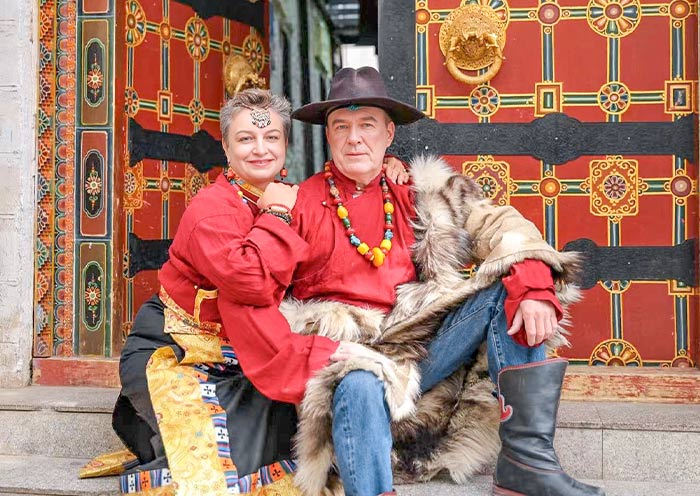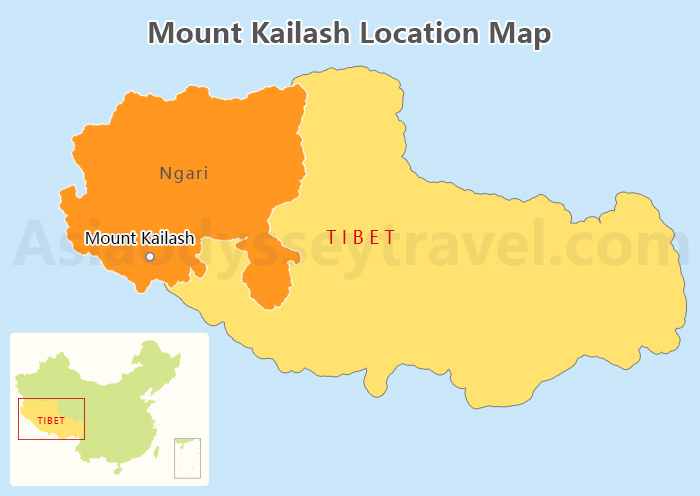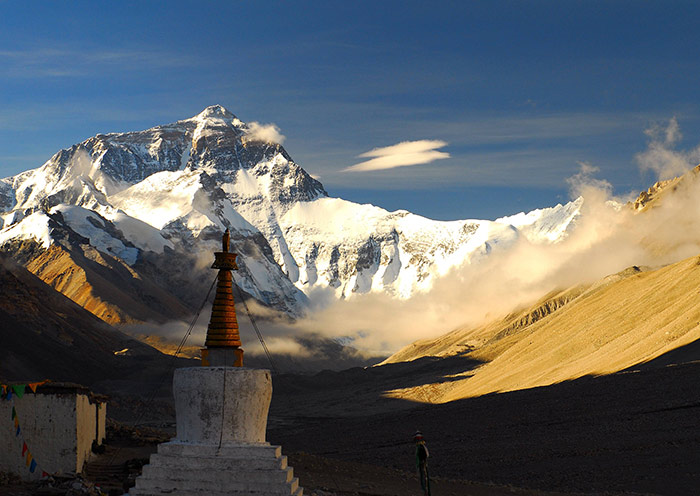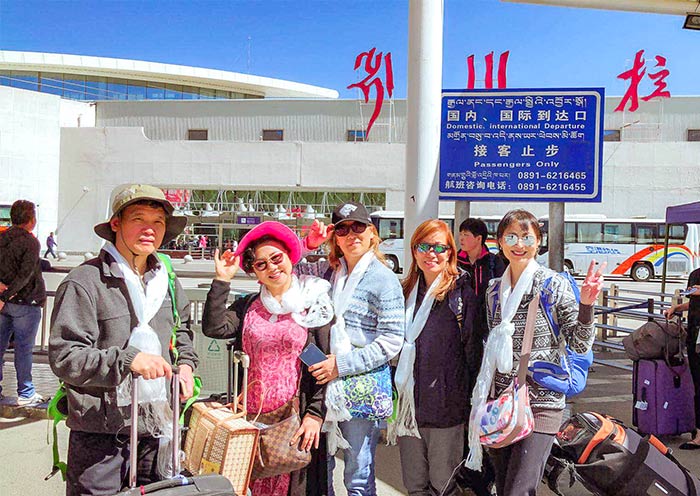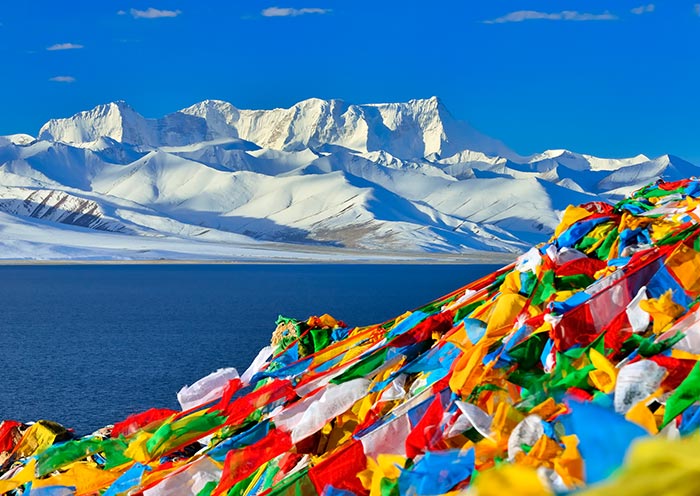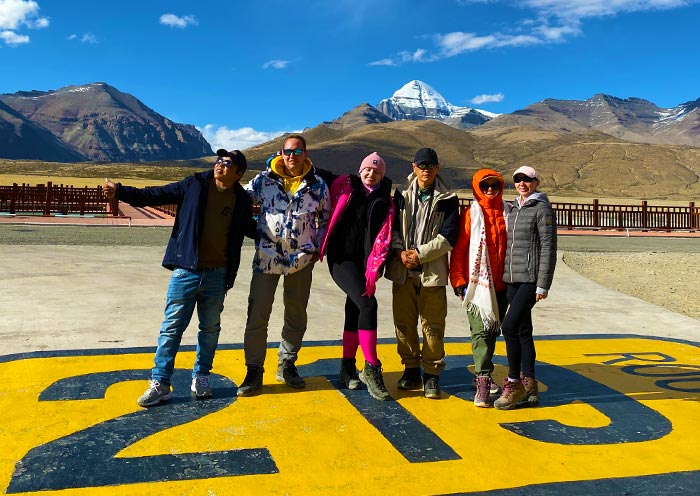Lhasa Sera Monastery Facts
Chinese Name: Se La Si, 色拉寺
Type: Monastery, Holy Sites
Altitude: 3,650m (12,000ft)
Best Seasons: All seasons
Open Hours: 09:00-17:00 (debate: 15:00-17:00 except Sunday)
Recommended Visiting Time: about 2-3 hours
Popular Activities: Mountain hiking, photography, pilgrimage
Tickets: CNY 50/person
Address: No.1 Sera Road, Chengduan District, Lhasa City, Tibet Autonomous Region
History of Sera Monastery
Sera Monastery is one of the most important monasteries in Tibet and has a rich history. It was founded in 1419 by Jamchen Chojey, a disciple of the famous Tibetan Buddhist scholar Tsongkhapa. The full name of the monastery is Sera Mahayana Monastery, which means "Wild Roses Monastery of Great Vehicle."
During its early years, Sera Temple grew rapidly and became one of the most influential monasteries in Tibet. At its peak, it housed more than 5,000 monks and was home to numerous scholars and teachers.
Throughout its history, Sera Temple has played an important role in preserving Tibetan Buddhist culture and traditions. Many important religious figures have studied and taught at the monastery, including the 5th Dalai Lama.
Layout & Architectures of Sera Monastery
Sera Monastery has several buildings and halls with historical and religious significance, including Ji Dratsang, Mai Dratsang, Aba Dratsang, and the impressive Tsogchen Hall. These buildings are a must-visit for anyone interested in the history and culture of Tibetan Buddhism.
Tsogchen Hall (措钦大殿)
Location: Northeast of Sera Monastery
Recommended Visiting Time: 0.5-1 hour
Tsogchen Hall is the largest hall in Sera Monastery and serves as the management center for religious affairs. It was built in 1710 with the direct sponsorship of Lashan Khan, a descendant of Gushi Khan.
Ji Dratsang (吉扎仓)
Ji Dratsang is a Tibetan Buddhist temple that has a strict system for studying Buddhist scriptures. It has a college specializing in the study of Buddhism, known as "Dratsang" in Tibetan. Typically, there is only one Dratsang in a temple, but some small temples are under the jurisdiction of a Dratsang in a large temple, which forms the relationship between the main temple and the sub-temple. Larger temples have several Dratsangs that study various kinds of Buddhism, medicine, insight, mathematics, and more. Ji Dratsang is the largest Dratsang in Sera Monastery, covering an area of 1702 square meters, second only to Tsogchen Hall. It was founded by Monk Gongjiuluozhen Renqin and built in 1435.
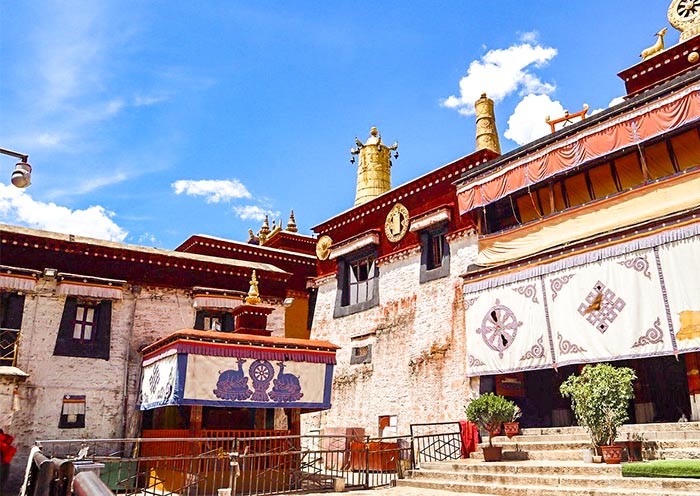
Mai Dratsang (麦扎仓)
Mai Dratsang is an early building of Sera Temple, founded in 1419 by Sakya, the temple's founder. It was destroyed by lightning and then rebuilt by Gongqin Qiangqupenba in 1761. It covers an area of 1620 square meters.
Aba Dratsang (阿巴扎仓)
Aba Dratsang is the early building of Sera Monastery and the Tantric Dratsang of the temple. It was founded by Sakyamuni in 1419 and originally served as the Tsochin Hall of Sera Monastery. After the completion of the current Tsogchen Hall in 1710, it was converted to a Dratsang. It covers an area of 1517 square meters and has three floors.
Tibetan Monk Debate at Sera Monastery
Sera Monastery is famous for its debates, which are a way for monks to discuss and learn about Buddhist knowledge. Every day, the monks of Sera Temple engage in the challenging task of debating the classics. During the debates, the debaters use various gestures to strengthen their arguments. For example, they may clap their hands to urge the other party to answer questions quickly or pull their Buddha beads to show that they can defeat the other party with the power of Buddha.
The debates take place in a courtyard and are a fascinating spectacle, with the monks' ritualized gestures such as clapping hands and stamping feet when a point is made adding to the excitement. Watching the debates is a unique and unforgettable experience that offers a glimpse into the intellectual and spiritual life of Tibetan Buddhist monks.
Insider Tips for Enjoying Sera Monastery Monk Debate
Debating Hours: 15:00-17:00(only except Sunday)
Debating Place: Debating courtyard(At the top of the path)

Other Best Things to See in Sera Monastery
Witness the Creation of a Sand Mandala
The tradition of creating colorful sand mandalas can be traced back to the seventh century during the reign of Srong-btsan Sgam-po, the Tibetan king. Sand mandalas are a symbol of the structure of the universe and a miniature model of the diverse habitation of the gods and their dependents. Monks use metal and small tubes to create precise textures and patterns on the ground, which can take several weeks to complete. However, the mandala is destroyed soon after its completion to conform to the Buddhist belief that nothing is eternal.
Explore the Colleges
Tibet Buddhist Academy is a public university in Tibet, founded in 2011. Ten branches of the academy, including Sera Monastery Branch, Drepung Monastery Branch, and Tashilumbu Monastery Branch, have been established since 2013. The Sera Monastery Branch was originally the Sera Monastery scripture study class, established to meet the needs of temple monks to study scriptures and to deepen the innovation of temple management.
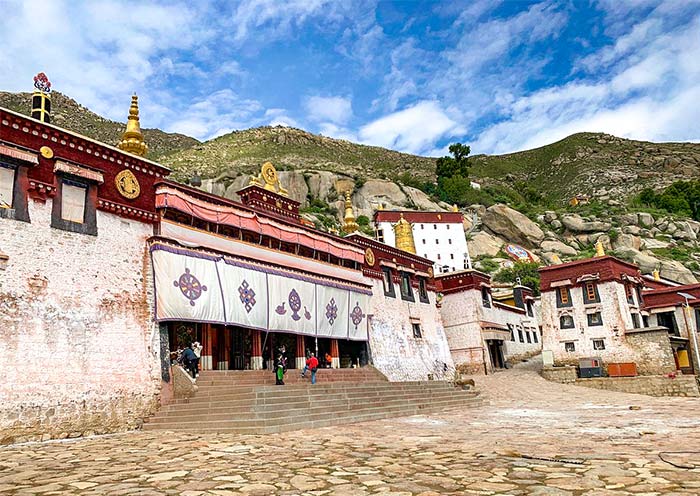
Visit Sera Monastery Library
Although the library is small, only about 100 square meters, it has a dozen bookshelves and a wide range of books, from Buddhist classics to legal knowledge, from literacy books to academic monographs, and from history and culture to scientific skills. According to the library's regulations, borrowers can borrow books by paying a small deposit and registering their name and phone number. The monks at Sera Temple love books, and the library staff never worry about the loss or damage of books.
As the saying goes, "Reading scriptures tastes like rice sorghum, reading history tastes like food, and reading all classes of authors tastes like minced pork." In the Sera Monastery Library, the monks can "taste" more than just these "three flavors."
Recommended Visiting Route at Sera Monastery
The activity at Sera Monastery centers around its three Dratsangs, which are visited in a clockwise circuit. To reach the first Dratsang, turn left from the main path. Each building has a dimly lit main hall and chapels towards the back that are full of sculptures. The open-air debating courtyard is also located in the vicinity of the Dratsangs.
Photography at Sera Monastery
With its grand building scale, solemn halls, deep narrow alleys, colorful brick walls, and gorgeous light and shadow, Sera Monastery is an excellent location for photography. Visitors can rent a set of Tibetan clothes and take photos in the temple like local people.
After exploring the monastery, visitors can relax at the sweet tea house near the exit, where they can enjoy a pot of sweet tea while wandering around. They can also take a leisurely style photo while sitting on the floor and sipping tea.
For those who have already climbed the Potala Palace, strolled through Barkhor Street, and visited the three major temples, the back mountain of Sera Monastery offers the best scenic spot in Lhasa City. From there, visitors can have a panoramic view of the city.
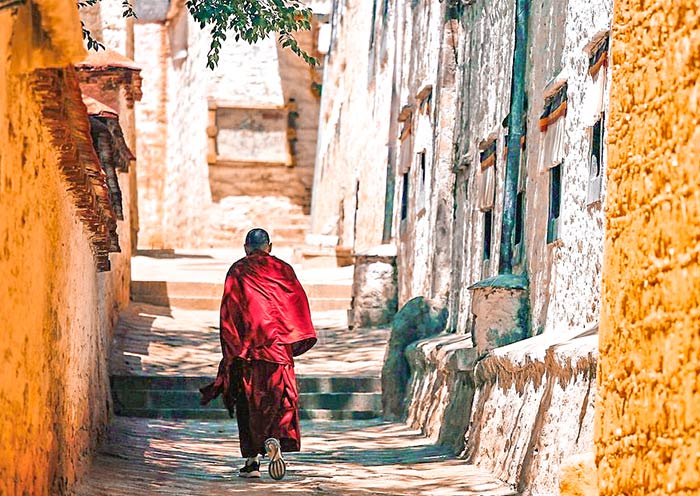
Location & How to Get to Sera Monastery
Sera Monastery is located at No.1 Sera Road, Chengduan District, Lhasa City, Tibet Autonomous Region, situated to the north of Lhasa and approximately 2 miles (4 km) from the downtown area.
About 6 km from the Potala Palace
About 12 km from the Drepung Monastery
Transfer to Sera Monastery
Foreign travelers are not allowed to travel alone in Tibet and must be accompanied by a licensed tour guide or travel agency. Asia Odyssey Travel offers private car services with a licensed tour guide to transfer visitors to Sera Monastery and other attractions in Lhasa and nearby. If you need any service, feel free to contact us.
Contact Us to Customize a Tibet TourUseful Tips to Travel in Lhasa
1. Best Time to Visit Sera Monastery & Lhasa
he best travel time is from April to October, with the largest number of people in July and August. At this time, Tibet's warm and humid climate is the best travel season.
This is the rainy season in Lhasa. Every rainy season, the green vegetation in Lhasa grows luxuriantly, and the oxygen content is significantly higher than that in the winter when the vegetation is sparse. Tourists are not prone to altitude stress when visiting at this time. In winter, Lhasa is very cold, with sparse vegetation and low oxygen content, which is not suitable for sightseeing.
The weather in Lhasa is mainly sunny all year round, with less precipitation. The annual precipitation is about 500 mm. It is known as "Sunshine City". This is because it is located in the north of the Himalayas and is a semi-arid climate of typical plateau monsoon. The temperature in summer is not high due to the influence of the downdraft all year round. At this time, the temperature in Lhasa is about 25-30 degrees, and the maximum temperature is also less than 30 degrees, but it is cold and dry in winter, and the minimum temperature can reach - 16.5 degrees.

2. What to Pack
1) Be sure to bring boots or shoes with good soles for you may need to take some hiking along the paths and trails in Sera Monastery and other scenic area.
2) Pack and prepare some necessary medicines.
3) Take an umbrella or rain coat for the weather changes a lot during one day.
4) Take a coat because the temperature difference between morning and evening is large.
How to Plan Sera Trips into Your Lhasa Tour?
In Tibet, foreign travelers are required to explore with a travel agency. A 4-day Lhasa tour or an 8-day Lhasa Shigatse Mount Everest tour that includes a visit to the Drepung Monastery is a good way to experience the key attractions in the region.
Usually, it is common for travelers to visit both Drepung Monastery and Sera Monastery in one day, as these two monasteries are among the most famous Gelug monasteries in Tibet. By visiting both monasteries in a day, you can fully immerse yourself in Tibetan culture and witness the unique traditions and rituals of these two important religious sites.
Explore Sera Temple with Asia Odyssey Travel (AOT)
Local based in Lhasa and Tibet over 10 years, our local team at Asia Odyssey Travel has carefully designed Tibet tours that offer a truly authentic and unforgettable experience. You can choose to travel in the comfort of a private tour with a flexible itinerary, or join a group tour that's budget-friendly without compromising on quality. Whatever your preference, Asia Odyssey Travel has a tour that caters to your needs and desires, ensuring that your journey to Tibet is an unforgettable adventure.
Book your Tibet tour with AOT and explore Sera Monastery in Lhasa right now!



